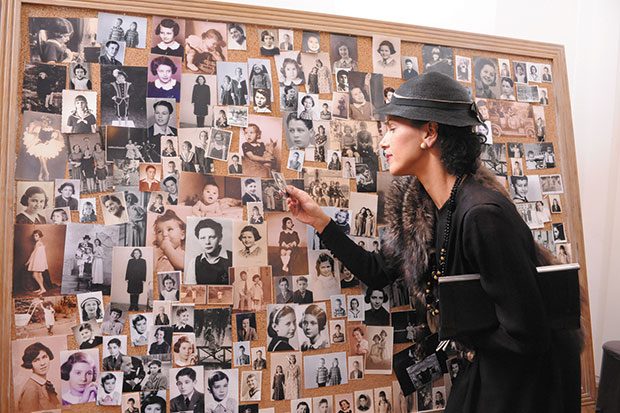Kindertransport brought to life in ‘Nicky’s Family’
Published June 6, 2012
“Nicky’s Family” is really at least four movies all rolled into one. Or rather, three stories, with one told twice.
The award-winning film, by Mateij Minac and Patrik Pass, tells the remarkable tale of Sir Nicholas Winton’s heroic efforts to get Jewish children out of Czechoslovakia in the late 1930s as Hitler extends his power and European dominance. The so-called “Kindertransport” resulted in safety and a new life in Great Britain, Winton’s homeland, for over 600 children, most of whom would likely have died at the hands of the Third Reich.
ADVERTISEMENT
The first story is the background of both Winton and the children, narrated by adults who had been saved by the Kindertransport, and also by Winton himself. With film and still photos from the era, we hear the stories of the refugees’ early lives in relative normalcy, how those lives were suddenly uprooted, about having to leave their families as they stepped onto trains bound for a secure life in England, and how that new life actually went down.
The second story, or one we might dub 1A, comprises dramatized reenactments of the same period of events, with actors performing scenes that interstitially fill the gaps left unfilled by the real-life visual material. These sepia-toned scenes show key points in Winton’s narrative, such as his romantic entanglement with a Nazi sympathizing spy who surprisingly aids Winton in getting a number of children to safety in Sweden.
The third tale tracks the discovery of Winton’s copious diaries and related information that gave journalists the ability to track down many of the refugees as adults. The ensuring “outing” of Winton’s heroics and surprise televised reunion of Nicky and his kids is touching indeed. We see the lives of the refugees, who Nicky never saw after their flight, as they aged and how their families grew and prospered.
The final chapter is devoted to how Winton’s life made a difference, not only in providing the potential for full and rewarding lives for the children, but how the refugees’ children and grandchildren are paying forward Winton’s selfless acts in their own charitable and humanitarian efforts around the world.
ADVERTISEMENT
Such an undertaking can result in extraordinary power but also a bit of short shrifting, and in this ambitious work by Matej Minac and Patrik Pass, both ensue in liberal doses.
For instance, there’s good mention but little insight into why Sir Nicholas chose to disobey his home investment office in England to set up shop in Czechoslovakia for the benefit of the children. Perhaps the story isn’t so interesting, or Winton was simply the one in a million that has the heart, mind and conviction to pull off such an accomplishment. We don’t truly know.
There’s also a bit of a jarring impact in the switching back and forth between the true video evidence and the dramatization. The story tends to move forward in fits and starts as the shifts occur, and the fictional footage doesn’t add a great deal to the narrative.
Where the story’s heartstrings yank is in seeing the rescued kids qua mature adults, as they express vast appreciation for their angel Nicky. No matter how sappy one might find the premise, seeing Winton surrounded by his refugee family, receiving their hugs and adulation decades after the horrid events of the late ’30s, serves to provide the most visceral connections of the film.
If the reunion scenes are most heartwarming, the closing is the most hopeful. Seeing the progeny of Nicky’s kids engaged in combating world hunger, advocating peace, providing social services — all the while attributing their philanthropic tendencies to Winton’s selfless conduct — shows the Kindertransport’s profound impact across generations and time.
Trying to realize the story of Nicky Winton’s impact in 90 minutes is a task that is probably nigh on impossible. Any of its facets could alone be fodder for a feature-length film. But for an overview of the almost eight-decade saga, it’s a pretty good place to begin.

















